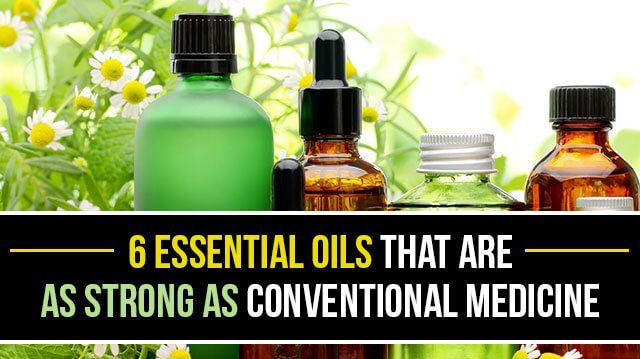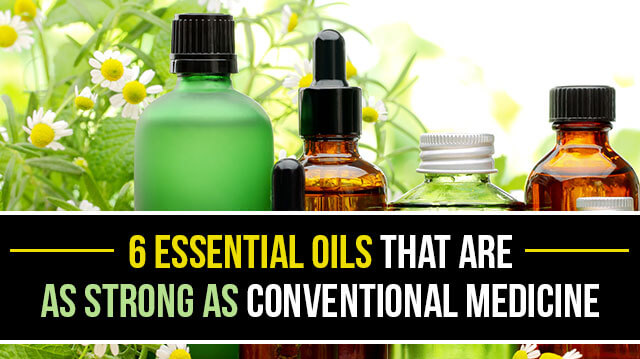
It’s a sad fact that, despite advancements in Western medicine, the overall health of the world’s population is declining. Illness and disease have spread at an unprecedented rate, with the number of fatal afflictions, such as cancer, coronary artery disease and stroke, reaching new highs. All this despite our progress in medicine and our growing understanding of the human anatomy.
The level of frustration with the Western medicine approach has grown. The typical solution of, “Oh, you’re sick? Here, take these drugs” is being questioned by many. More and more people are turning to alternative means to safeguard their health. One such alternative is essential oils, which started out as aromatherapy tools but are now being used by holistic health practitioners to help with, or even cure, almost any ailment under the sun.
What are essential oils?
Essential oils are the highly concentrated substance of plants. As the name suggests, they represent the very essence of the plant from which they were taken, and so carry a strong aroma of the original plant. Essential oils can be created by either distillation via the use of steam and water, or extraction via cold pressing.
The governing idea behind essential oils is that they are chosen from plants that display certain favorable traits, such as antifungal properties designed to prevent the establishment of mold and other parasitic fungi on their leaves or stems. These favourable traits are then concentrated into the essential oil of that plant, and can be put to use by humans via inhalation, ingestion, or absorption to help cure illness and heal the body. Essential oils can be up to 70 times more potent than their dried herb form, so they’re nothing to be scoffed at.
Six essential oils that are as potent as medicine
With the financial support of an ever-growing body of essential oil producers and sellers, there is now a solid body of scientific evidence that shows certain oils can provide a viable replacement for common Western medicines. Here’s a list of six essential oils that are powerful weapons in the fight to maintain your health:
Lavender
Lavender essential oil is easily the most useful and popular essential oil on the market. It has been used for medicinal purposes for thousands of years, and can be utilized for a wide range of applications. It can be applied topically to alleviate skin disorders, acne, insect bites and even minor burns. It also can be used as a disinfectant for scratches and shallow cuts. It can be used aromatically to help with anxiety and calm frayed nerves, and can even help you get to sleep at night.
Lemon
Similar to lavender, lemon essential oil has a long list of viable uses. It is perhaps most celebrated, however, for its ability to cleanse toxins from the body, stimulate lymphatic drainage, and restore energy levels. Recent studies have even shown that it can promote certain neurological activity, which triggers the breakdown of body fat, essentially making it a natural weight-loss tool. And, of course, a couple of drops of lemon essential oil in water or tea can help to soothe a sore throat. Good old lemon!
Tea tree
Tea tree, otherwise known as Melaleuca alternifolia, is famous for its strong antiseptic properties. It can be used topically to disinfect wounds, and has been shown to kill various strains of bacteria, viruses and fungi. Several studies have examined the use of tea tree essential oil as a replacement to conventional drugs, and have shown that in many cases it makes an excellent alternative to mainstream medicines. Furthermore, tea tree essential oil has actually been suggested to have a synergistic effect in the body, meaning that it may help prevent the development of antibiotic resistance.
Eucalyptus
Eucalyptus, known for being the food source of koalas, arguably Australia’s cutest marsupial, also has a range of uses as a medicine. It has most commonly been used in relation to colds and flu, helping to cleanse the body of the toxins and microorganisms that make people sick. It can aid in alleviating sinus and allergy problems, and can even help with respiratory illnesses including asthma, bronchitis, pneumonia and tuberculosis when rubbed on the upper chest.
Peppermint
 Peppermint essential oil, in addition to having a great smell, is second only to lavender oil in its range of uses. When applied topically, it provides a cooling sensation, which can relieve sore muscles and itchy bug bites. It also can soothe headaches when applied to the back of the head or the temples. When ingested, peppermint helps relieve nausea due to its ability to reduce muscle spasms. When blended with pine and eucalyptus oil, it can also be particularly effective for dissipating coughing fits and helping to relieve bronchial congestion. Finally, along with lavender essential oil, peppermint oil can help with an underactive thyroid.
Peppermint essential oil, in addition to having a great smell, is second only to lavender oil in its range of uses. When applied topically, it provides a cooling sensation, which can relieve sore muscles and itchy bug bites. It also can soothe headaches when applied to the back of the head or the temples. When ingested, peppermint helps relieve nausea due to its ability to reduce muscle spasms. When blended with pine and eucalyptus oil, it can also be particularly effective for dissipating coughing fits and helping to relieve bronchial congestion. Finally, along with lavender essential oil, peppermint oil can help with an underactive thyroid.
Oregano
Oregano essential oil makes a great friend and a merciless enemy, with strong antifungal, antiparasitic, antimicrobial, antiseptic and anti-inflammatory properties. Pretty much anti-anything bad, so be sure to keep a bottle of oregano oil close at hand. It can aid with fungal infections (including athlete’s foot), sprains, bruises, joint pain, tendonitis, cysts, warts, Candida, and herpes, to name but a few. Keep in mind that oregano is a hot oil, meaning that if used undiluted it can potentially irritate your skin. For this reason, always use oregano essential oil with a carrier oil, such as coconut oil or castor oil.
Already an avid essential oil user? We’d love to know what oils you like to use and the benefits they provide!
—Liivi Hess
Liivi is an Integrative Nutrition Health Coach and is training to become a doula. She inspires women to find peace and personal power by taking control of health and fertility naturally. Liivi‘s passion is ancestral nutrition and primal lifestyle design. She and her partner Will live between Toronto, Canada and Queenstown, New Zealand.
Sources:
http://onlinelibrary.wiley.com/doi/10.1046/j.1365-2672.2001.01428.x/full
http://pubs.acs.org/doi/abs/10.1021/jf980154m
http://pubs.acs.org/doi/abs/10.1021/jf00059a013
http://onlinelibrary.wiley.com/doi/10.1046/j.1365-2672.2000.00943.x/full
http://www.sciencedirect.com/science/article/pii/S0308814699002472
http://onlinelibrary.wiley.com/doi/10.1002/ptr.1103/abstract

